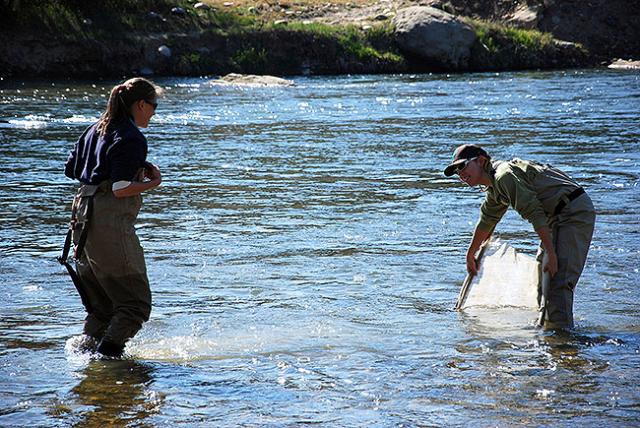
National Conservation Lands
The BLM's twenty year old National Conservation Lands currently includes over 900 units covering about 33 million acres designated by Congress and the President to conserve special features, from winding rivers to mountain vistas. The National Conservation Lands offer the American people exceptional opportunities for hunting, solitude, wildlife viewing, fishing, history exploration, scientific research and a wide range of traditional uses. The BLM manages these public lands for the benefit of current and future generations, supporting conservation as a part of the BLM's multiple-use mission. This means respecting the ties that native and traditional communities have to public lands, as well as being welcoming of diverse interests and uses.
- NATIONAL MONUMENTS
-
The BLM’s National Conservation Lands include beautiful and diverse national monuments in nine western states. The Antiquities Act of 1906 grants the President authority to designate national monuments to protect “objects of historic or scientific interest.” While the President establishes most national monuments, Congress occasionally establishes national monuments to protect certain natural or historic features. Since 1906, Presidents and Congress have designated more than 122 national monuments, 28 of which are maintained by the BLM. Other agencies that manage national monuments are the National Park Service, the Forest Service, and the Fish & Wildlife Service. The latest available summary report can be found here or on the Maps, Data, and Resources Page.
Browse the National Conservation Lands region pages and area site pages for more information about national monuments and other National Conservation Lands areas.
- National Conservation Areas and Similar Designations
-
The BLM’s National Conservation Lands include National Conservation Areas and Similar Designations. Congress designates National Conservation Areas (NCAs) and similarly designated lands to conserve, protect, enhance, and manage the public lands for the benefit and enjoyment of present and future generations. The BLM’s National Conservation Lands include 17 NCAs and six similarly designated lands in 10 states. These lands offer exceptional scientific, cultural, ecological, historical, and recreational value. They differ in landscape and size, varying from the coastal beauty of California's 18-acre Piedras Blancas Light Station Outstanding Natural Area to the rugged desert vistas of Nevada's 1.2 million-acre Black Rock Desert-High Rock Canyon Emigrant Trails NCA.
Congress also designates other areas similar to NCAs under three categories: Cooperative Management and Protection Areas, Outstanding Natural Areas, and Forest Reserves. These public lands are managed similarly to NCAs and also offer exceptional natural and cultural values. The latest available information can be found here or on the Maps, Data and Resources Page.
Browse BLM's National Conservation Lands and Similar Designations by state or region.
- National Scenic and Historic Trails
-
The 1965 “Conservation and Preservation of Natural Beauty” speech by President Lyndon Johnson inspired a movement and in 1968 Congress established the National Trails System Act. The Appalachian and Pacific Crest trails were the first congressionally designated National Trails in the National Trails System. Today there are 30 congressionally designated National Scenic and Historic Trails, many within an hour's drive from most urban areas.

- Wild and Scenic Rivers
-
Signed in 1968, the Wild and Scenic Rivers Act protects more than 200 rivers in 40 states and Puerto Rico. Wild and Scenic Rivers are designated into the National Wild and Scenic Rivers System to preserve their free-flowing condition and to protect and enhance their outstandingly remarkable scenic, recreational, geologic, fish, wildlife, historic, cultural, and other similar values.
- Wilderness and Wilderness Study Areas
-
The Bureau of Land Management is responsible for 260 wilderness areas and 491 wilderness study areas in the western States and Alaska. From primitive hunting locations to remote fishing spots, wilderness and Wilderness Study Areas provide unparalleled opportunities for spending time outdoors.
- 15-Year Strategy
-
Primarily located in the West, the BLM’s National Conservation Lands represent some of the West’s most spectacular landscapes. They provide abundant recreational opportunities, important scientific research grounds, and outstanding ecological and cultural resources.
- Maps and Data
-
Maps reveal the breadth and diversity of the National Conservation Lands.
- Scientific Research
-
National Conservation Lands comprise a natural scientific laboratory that attracts scientists from around the world. The scientific values found within many National Conservation Lands units open the door to valuable research on topics ranging from geology, paleontology, archaeology and history to biology, botany and ecosystem studies.



